*NURSING > QUESTIONS & ANSWERS > Chapter 41: Oxygenation Fundamentals of Nursing, 9th Edition (All)
Chapter 41: Oxygenation Fundamentals of Nursing, 9th Edition
Document Content and Description Below
1. A nurse is teaching staff about the conduction of the heart. In which order will the nurse present the conduction cycle, starting with the first structure? 1. Bundle of His 2. Purkinje network ... 3. Intraatrial pathways 4. Sinoatrial (SA) node 5. Atrioventricular (AV) node a. 5, 4, 3, 2, 1 b. 4, 3, 5, 1, 2 c. 4, 5, 3, 1, 2 d. 5, 3, 4, 2, 1 ANS: B The conduction system originates with the SA node, the “pacemaker” of the heart. The electrical impulses are transmitted through the atria along intraatrial pathways to the AV node. It assists atrial emptying by delaying the impulse before transmitting it through the Bundle of His and the ventricular Purkinje network. 2. A nurse is teaching the patient with mitral valve problems about the valves in the heart. Starting on the right side of the heart, describe the sequence of the blood flow through these valves. 1. Mitral 2. Aortic 3. Tricuspid NURSINGTB.COM FUNDAMENTALS OF NURSING 9TH EDITION POTTER TEST BANK NURSINGTB.COM Prime yourself for your Tests – Study Questions 4. Pulmonic a. 1, 3, 2, 4 b. 4, 3, 2, 1 c. 3, 4, 1, 2 d. 2, 4, 1, 3 ANS: C The blood flows through the valves in the following direction: tricuspid, pulmonic, mitral, and aortic. 3. A nurse explains the function of the alveoli to a patient with respiratory problems. Which information about the alveoli’s function will the nurse share with the patient? a. Carries out gas exchange b. Regulates tidal volume c. Produces hemoglobin d. Stores oxygen ANS: A The alveolus is a capillary membrane that allows gas exchange of oxygen and carbon dioxide during respiration. The alveoli do not store oxygen, regulate tidal volume, or produce hemoglobin. 4. A nurse auscultates heart sounds. When the nurse hears S2, which valves is the nurse hearing close? a. Aortic and mitral b. Mitral and tricuspid c. Aortic and pulmonic d. Mitral and pulmonic NURSINGTB.COM FUNDAMENTALS OF NURSING 9TH EDITION POTTER TEST BANK NURSINGTB.COM Prime yourself for your Tests – Study Questions ANS: C As the ventricles empty, the ventricular pressures decrease, allowing closure of the aortic and pulmonic valves, producing the second heart sound, S2. The mitral and tricuspid produce the first heart sound, S1. The aortic and mitral do not close at the same time. The mitral and pulmonic do not close at the same time. 5. The nurse is teaching about the process of exchanging gases through the alveolar capillary membrane. Which term will the nurse use to describe this process? a. Ventilation b. Surfactant c. Perfusion d. Diffusion ANS: D Diffusion is the process of gases exchanging across the alveoli and capillaries of body tissues.Ventilation is the process of moving gases into and out of the lungs. Surfactant is a chemical produced in the lungs to maintain the surface tension of the alveoli and keep them from collapsing. Perfusion is the ability of the cardiovascular system to carry oxygenated blood to tissues and return deoxygenated blood to the heart. 6. A nurse is caring for a patient who was in a motor vehicle accident that resulted in cervical trauma to C4. Which assessment is the priority? a. Pulse b. Respirations c. Temperature d. Blood pressure ANS: B Respirations and oxygen saturation are the priorities. Cervical trauma at C3 to C5 usually results in paralysis of the phrenic nerve. When the phrenic nerve is damaged, the diaphragm does not descend properly, thus reducing inspiratory lung volumes and causing hypoxemia. While pulse NURSINGTB.COM FUNDAMENTALS OF NURSING 9TH EDITION POTTER TEST BANK NURSINGTB.COM Prime yourself for your Tests – Study Questions and blood pressure are important, respirations are the priority. Temperature is not a high priority in this situation. 7. The patient is breathing normally. Which process does the nurse consider is working properly when the patient inspires? a. Stimulation of chemical receptors in the aorta b. Reduction of arterial oxygen saturation levels c. Requirement of elastic recoil lung properties d. Enhancement of accessory muscle usage ANS: A Inspiration is an active process, stimulated by chemical receptors in the aorta. Reduced arterial oxygen saturation levels indicate hypoxemia, an abnormal finding. Expiration is a passive process that depends on the elastic recoil properties of the lungs, requiring little or no muscle work. Prolonged use of the accessory muscles does not promote effective ventilation and causes fatigue. [Show More]
Last updated: 1 year ago
Preview 1 out of 773 pages
Instant download
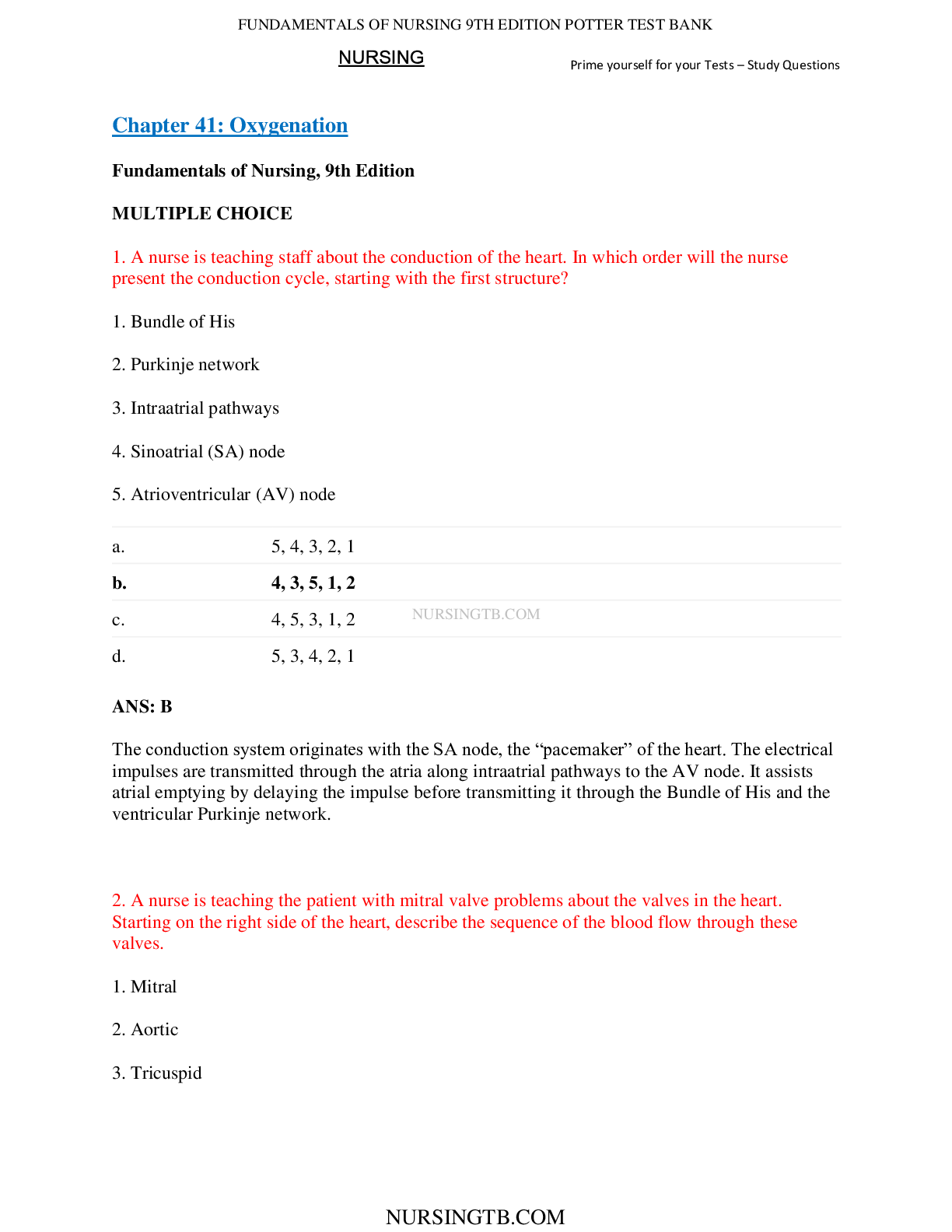
Buy this document to get the full access instantly
Instant Download Access after purchase
Add to cartInstant download
Reviews( 0 )
Document information
Connected school, study & course
About the document
Uploaded On
Apr 21, 2022
Number of pages
773
Written in
Additional information
This document has been written for:
Uploaded
Apr 21, 2022
Downloads
0
Views
45





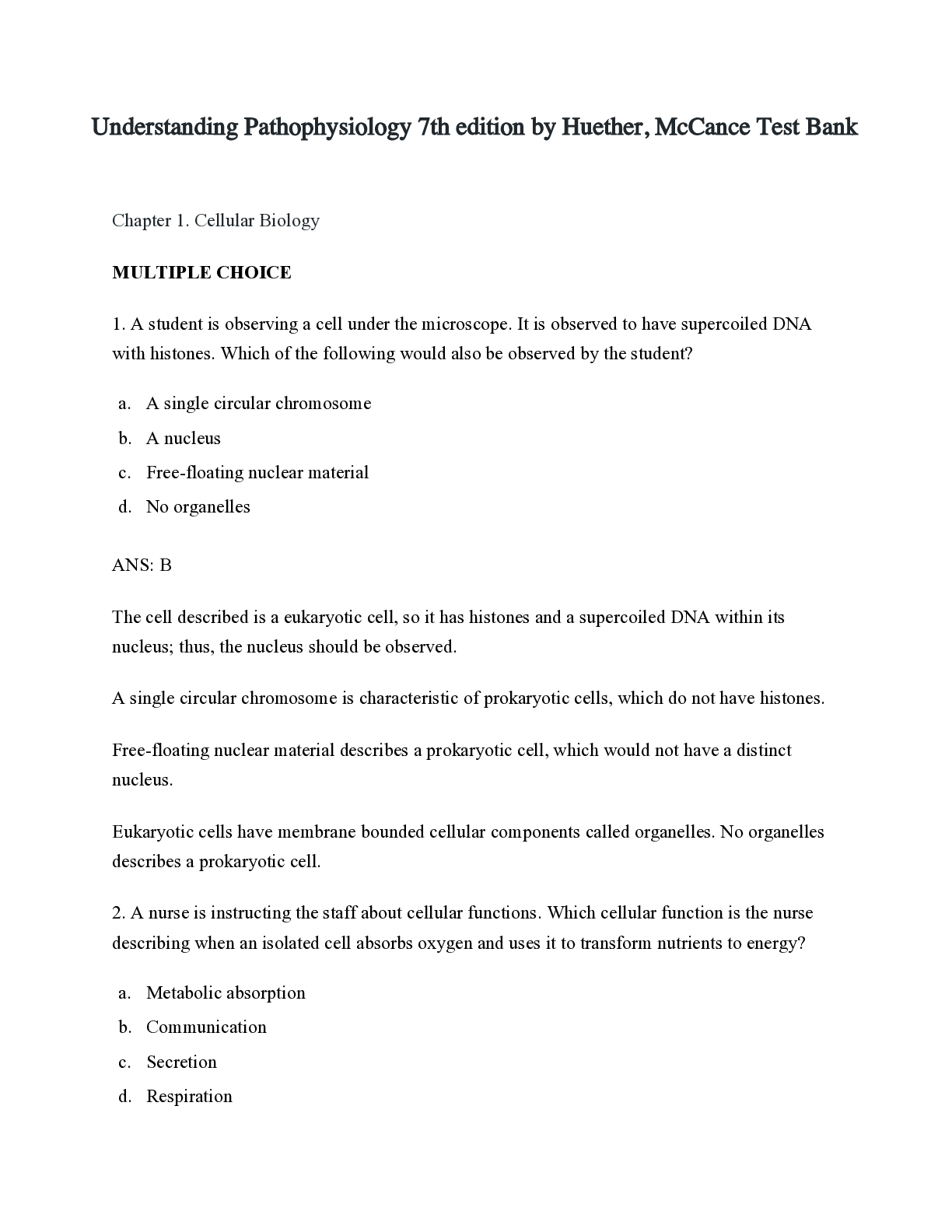
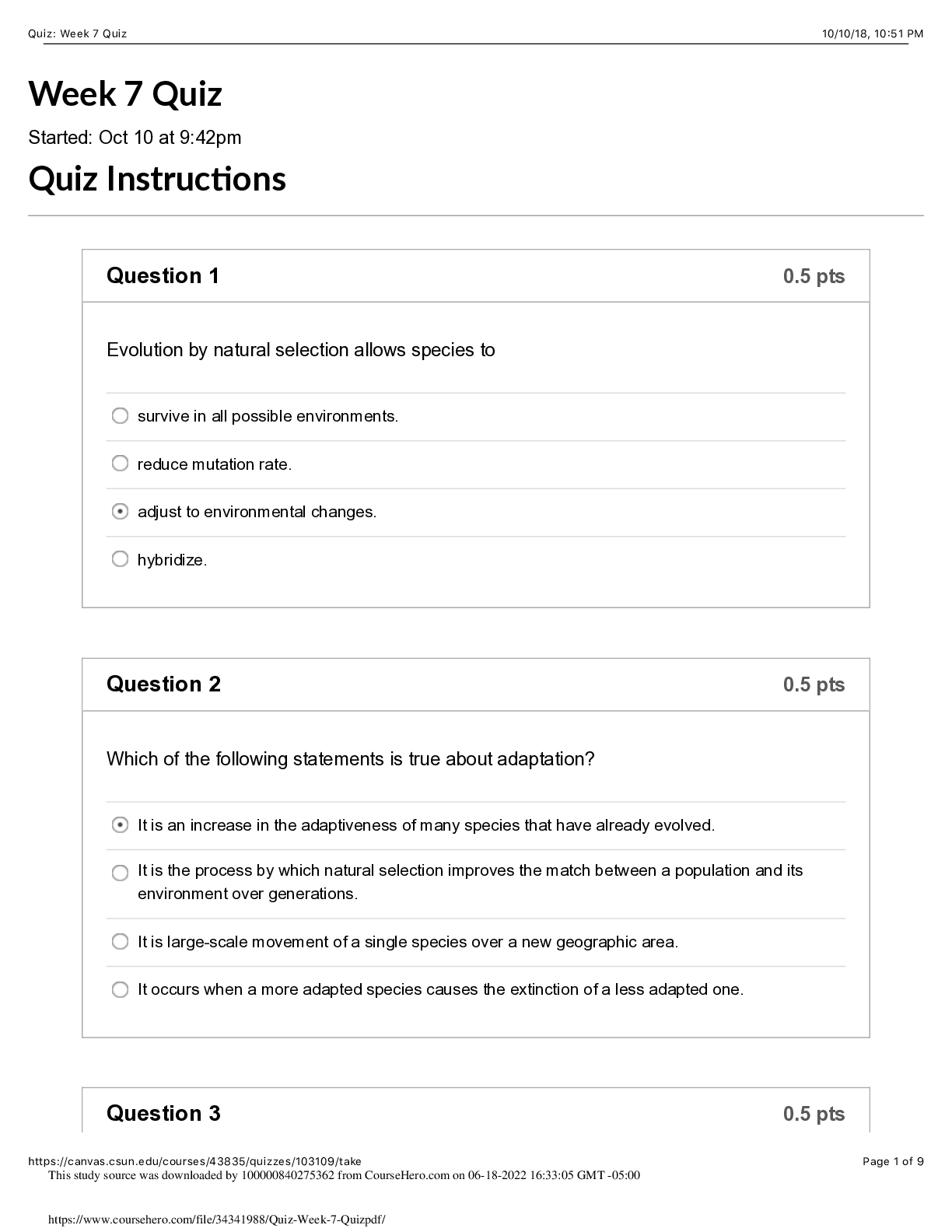
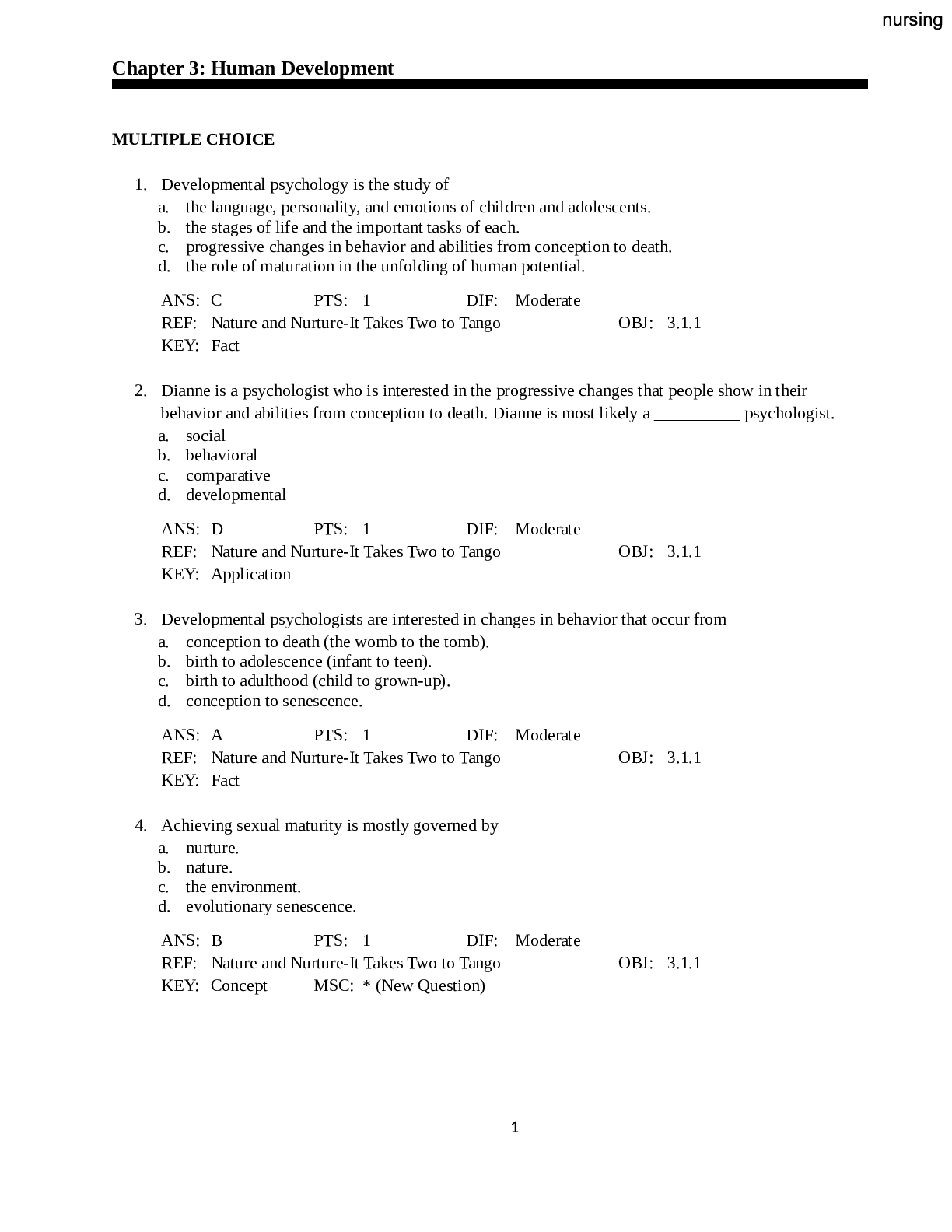
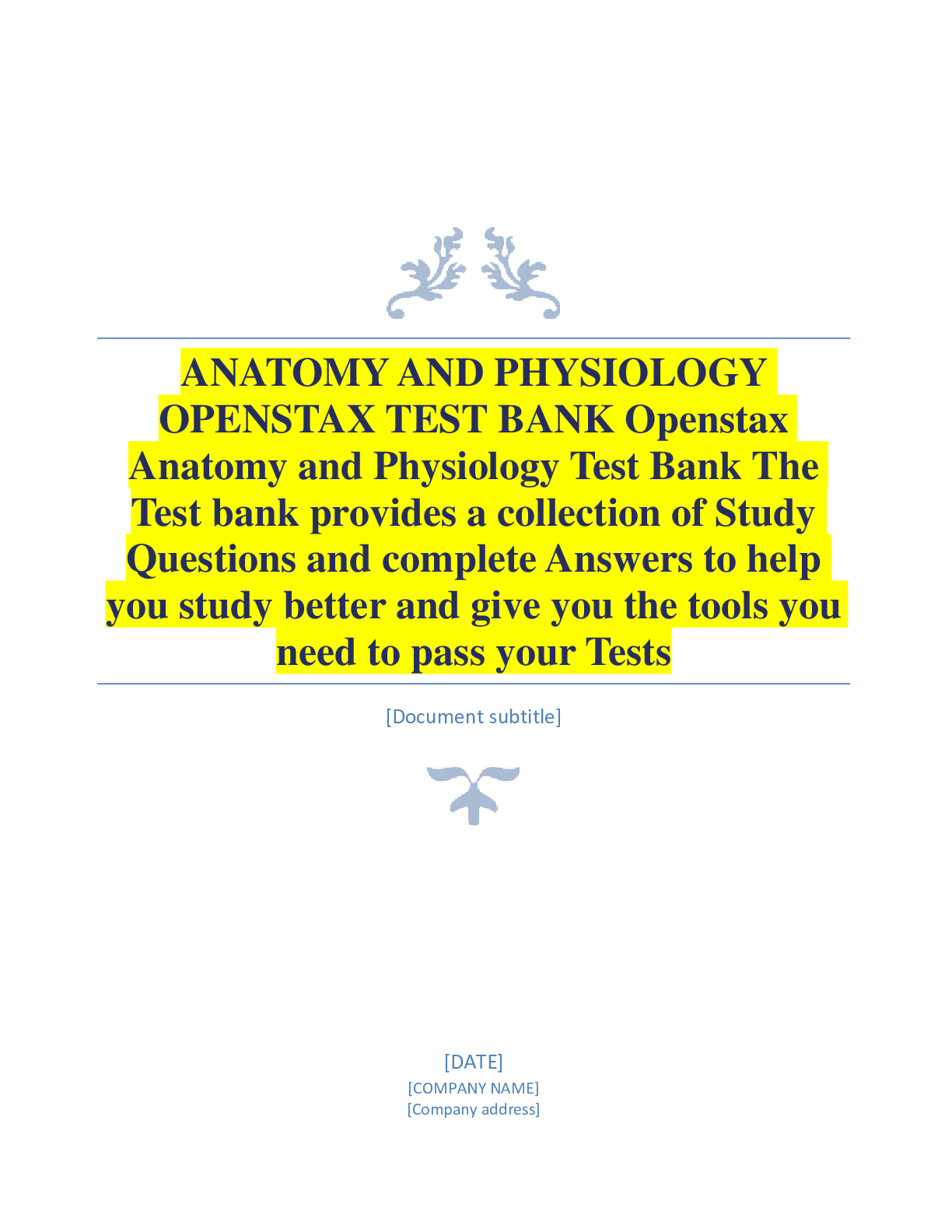
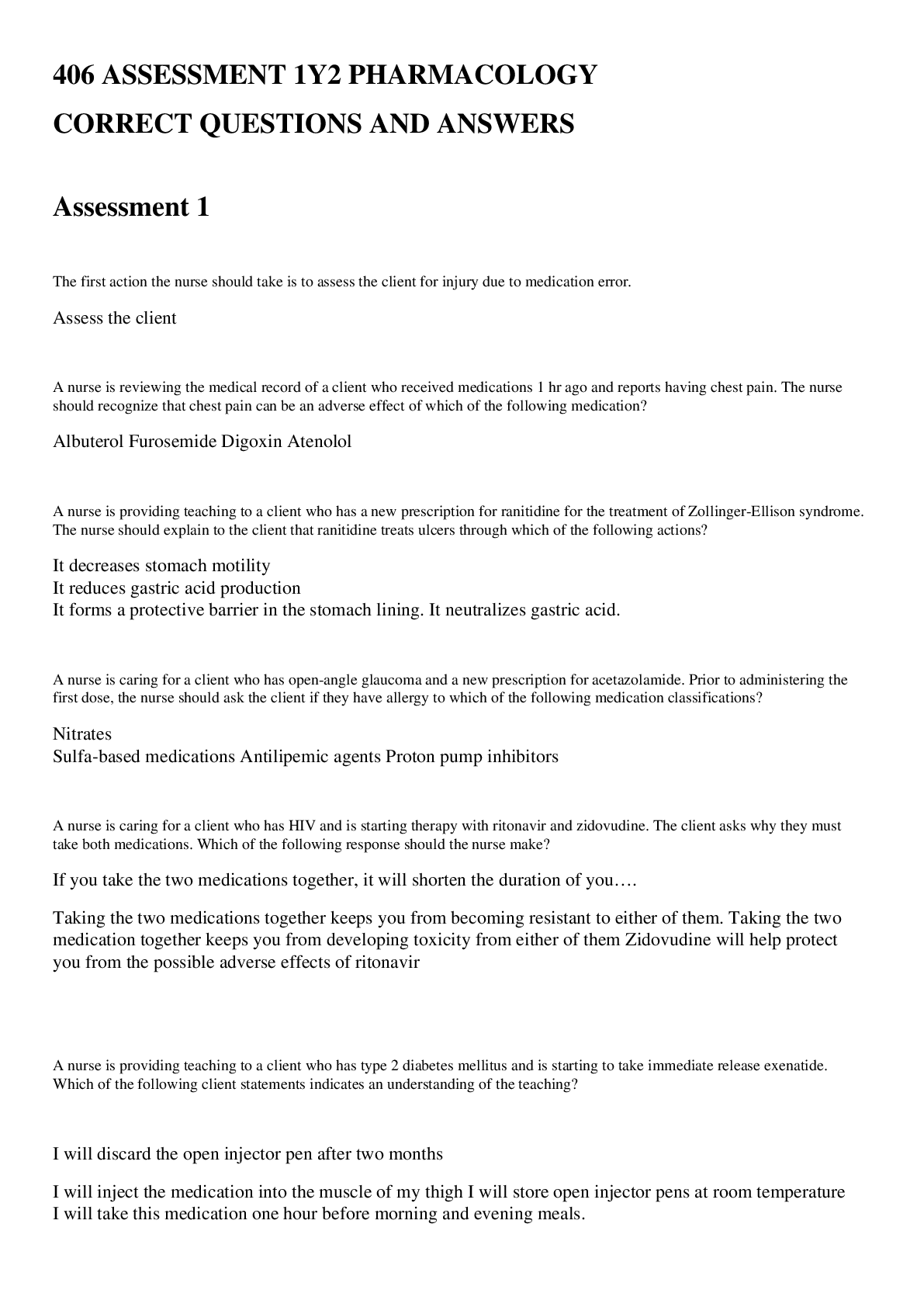
.png)
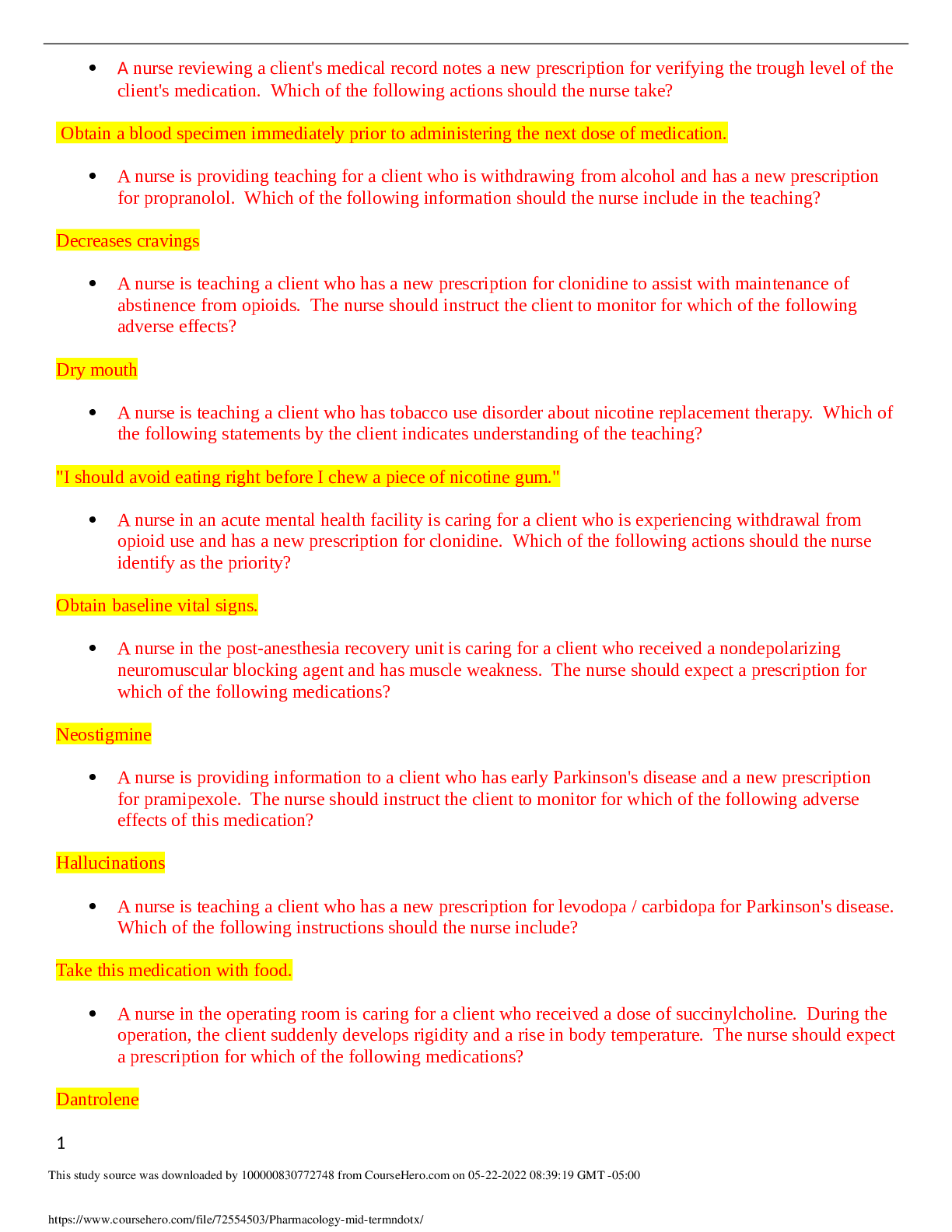
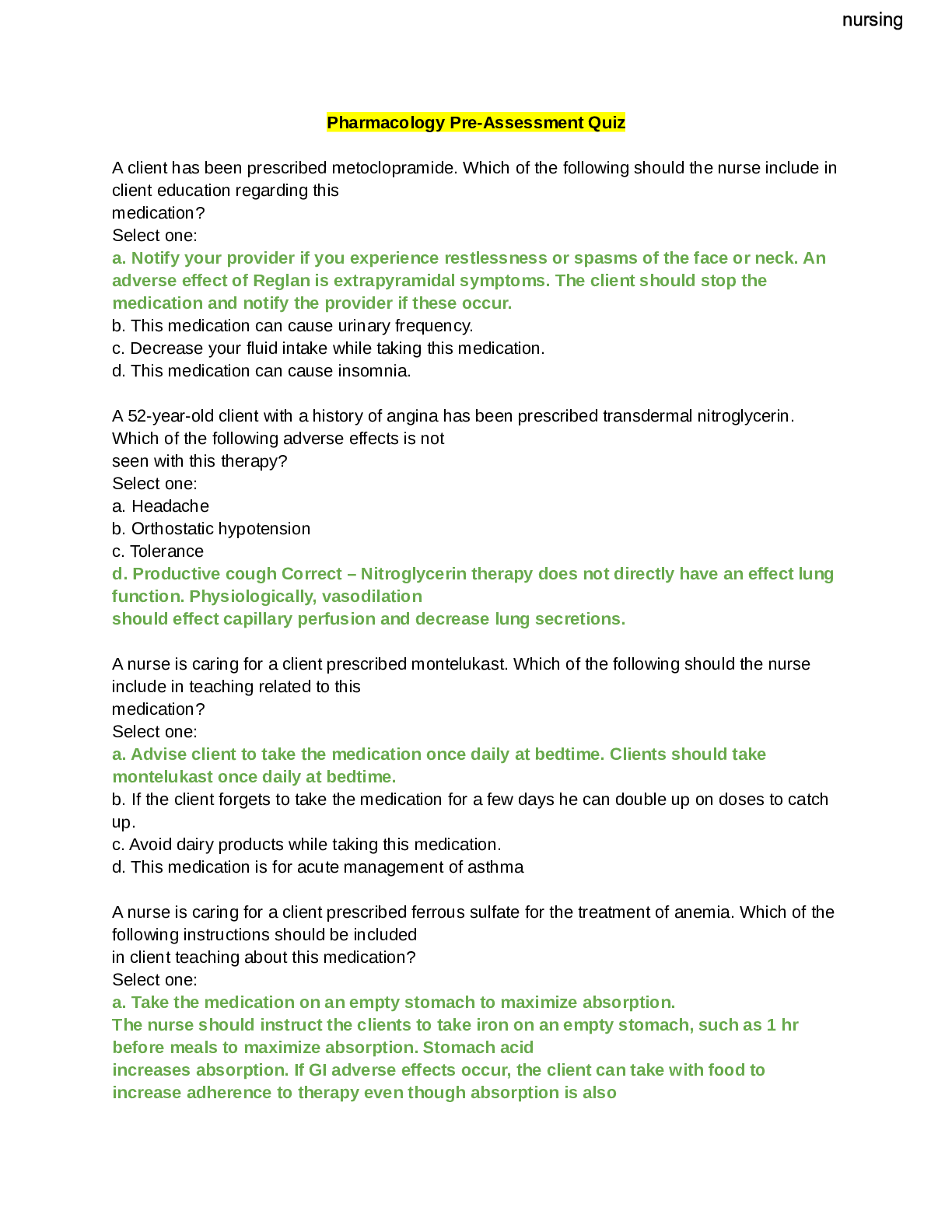
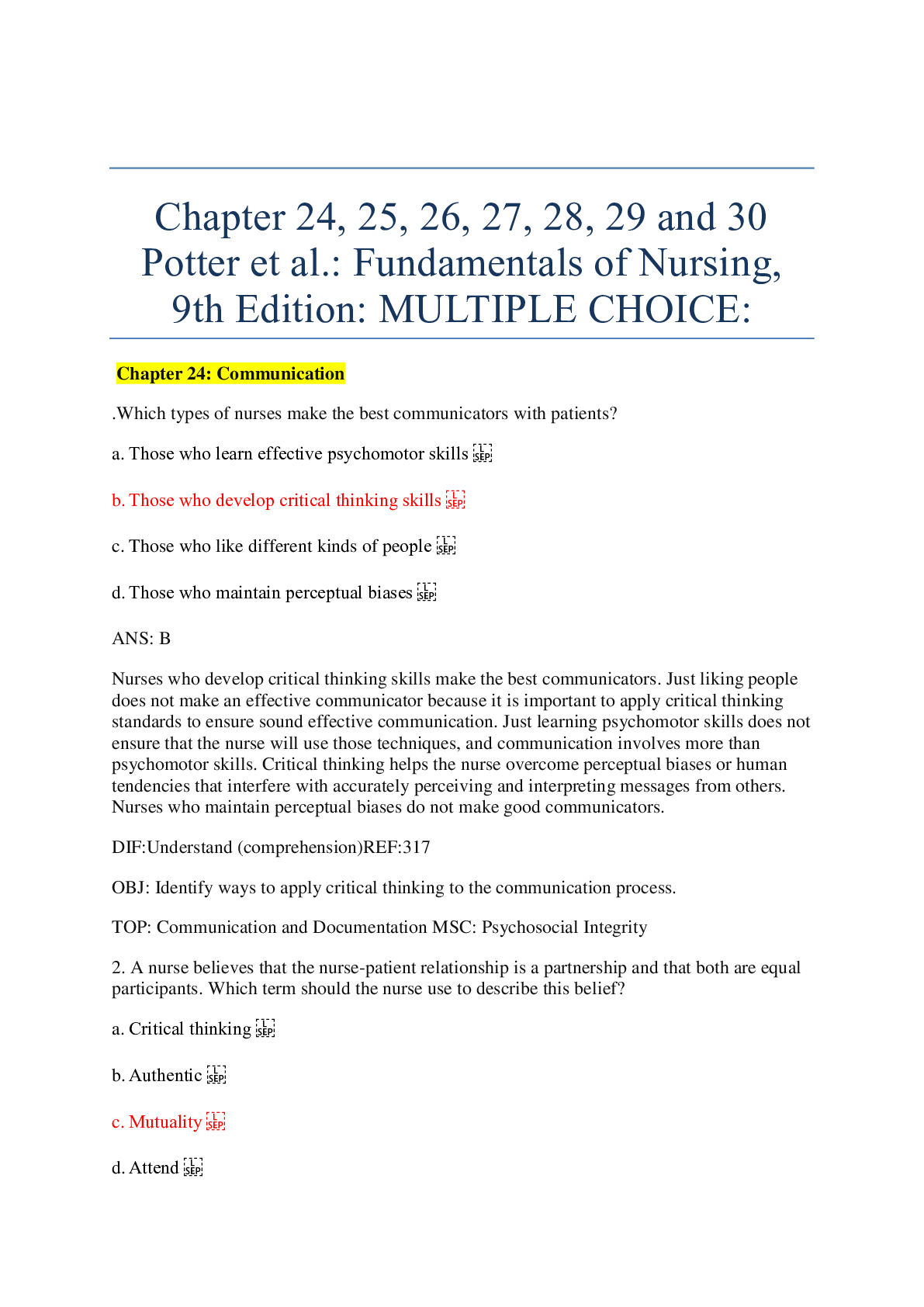
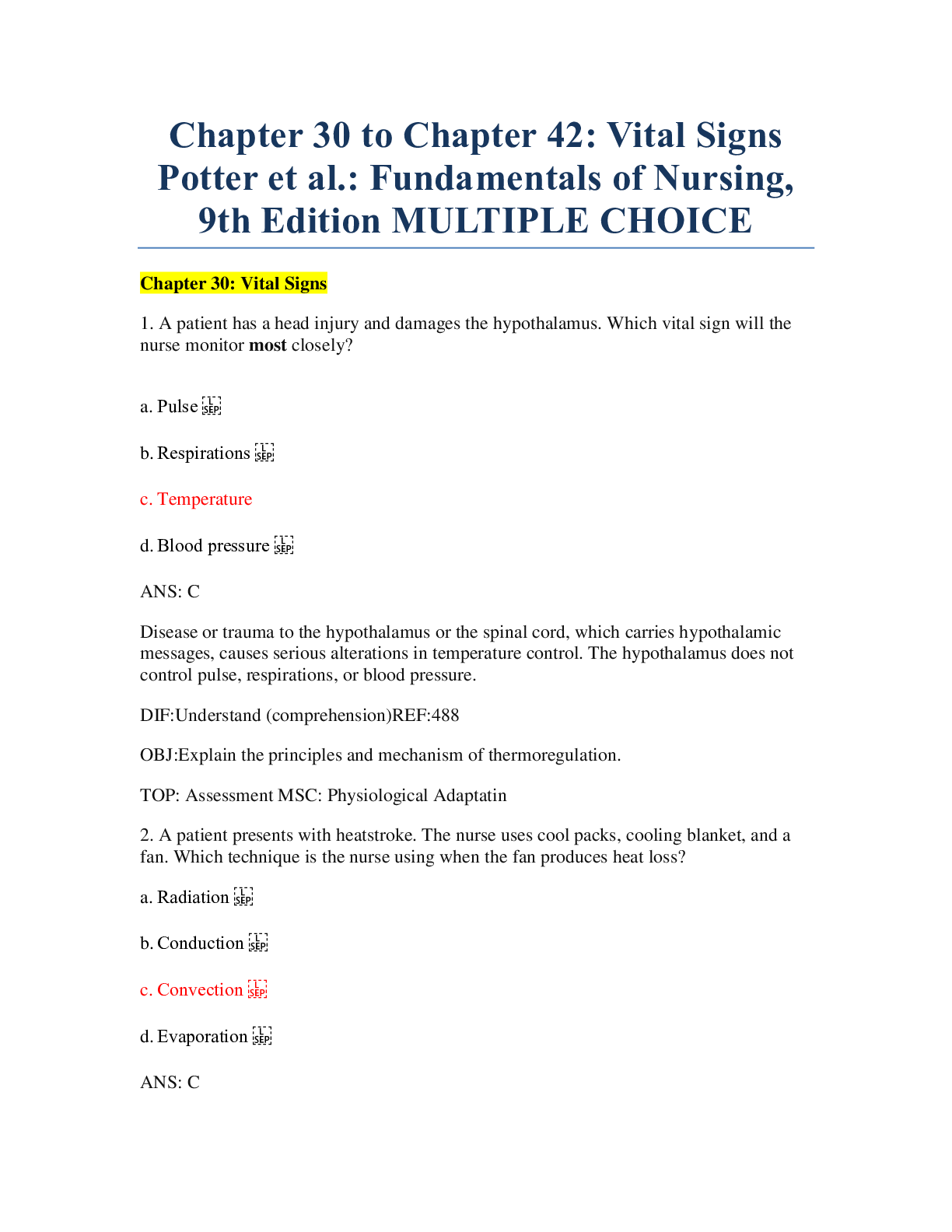





 STUDY GUIDE (UPDATED 2021).png)

